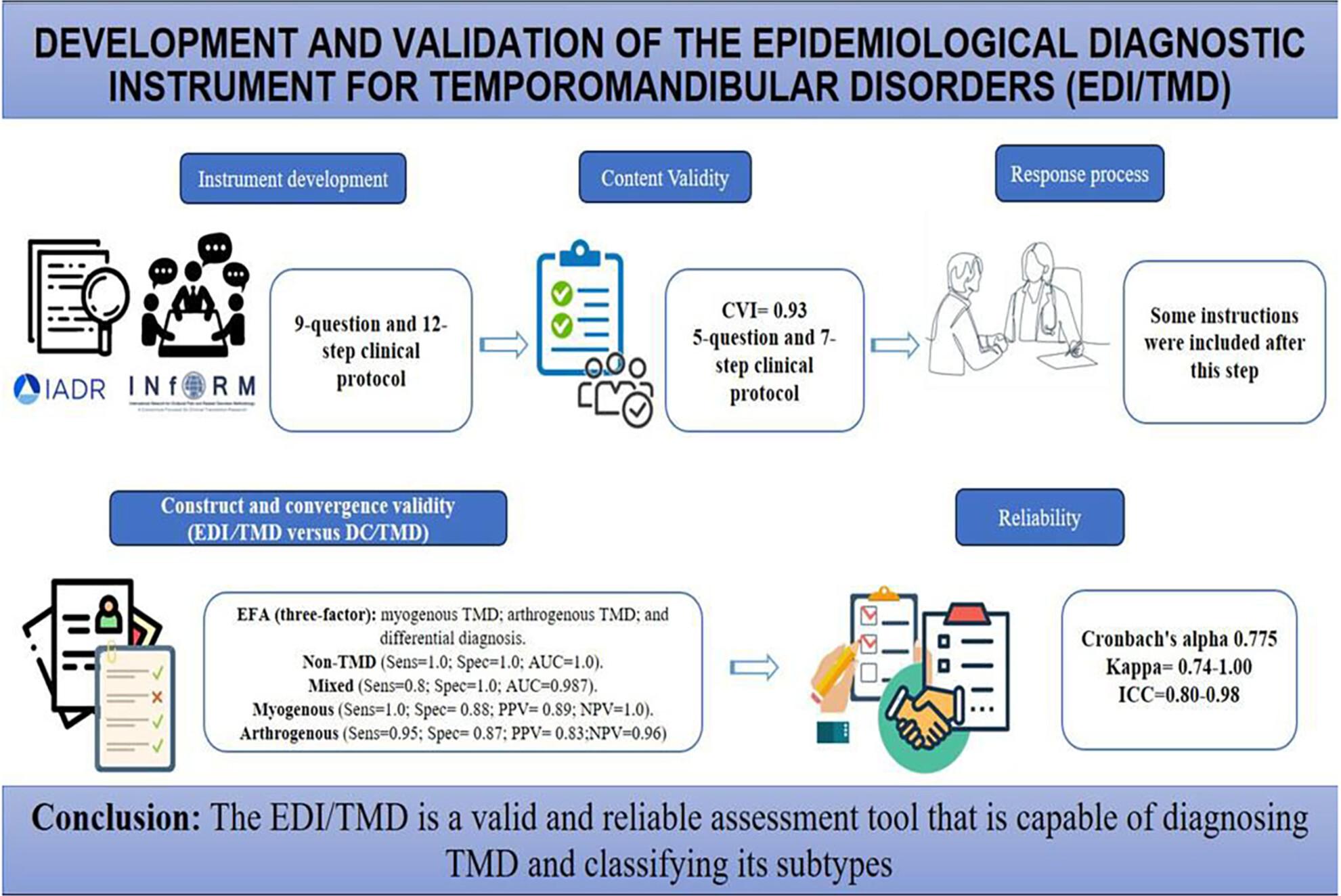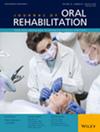Development and Validation of the Epidemiological Diagnostic Instrument for Temporomandibular Disorders
Abstract
Background
Temporomandibular disorders (TMD) are a highly misreported health problem. Its diagnosis is complex and requires the use of valid and reliable instruments.
Objective
To develop and validate the Epidemiological Diagnostic Instrument for TMD (EDI/TMD).
Methods
Content validity (CV), response process (RP), construct validity (EFA), reliability (inter and intraobserver consistency), and convergence validity of the EDI/TMD were assessed and compared to the Diagnostic Criteria for TMD (DC/TMD).
Results
An instrument composed of a 9-question questionnaire and a 12-step clinical protocol was developed. CV analysis reduced the instrument to a 5-question and 7-step clinical protocol (CVI = 0.93). Some instructions were included after the RP. The EFA found three factors: myogenous TMD, arthrogenous TMD, and differential diagnosis. The reliability scores ranged from substantial to excellent. When compared to the DC/TMD, the EDI/TMD total score indicated that this instrument is valid and provides satisfactory diagnostic criteria (Kappa = 0.906; p < 0.001), and can distinguish non-TMD and TMD individuals, with a cut-off point of 4.9 (Sensitivity = 1.0; Specificity = 1.0; AUC = 1.0). For individuals who had both myogenous and arthrogenous TMD, the cut-off point was 14 or higher (Sensitivity = 0.8; Specificity = 1.0; AUC = 0.987). For individuals who had either myogenous TMD (Sensitivity = 1.0; Specificity = 0.88; PPV = 0.89; NPV = 1.0) or arthrogenous TMD (Sensitivity = 0.95; Specificity = 0.87; PPV = 0.83; NPV = 0.96), the cut-off point was between 5 and 13.9, with the highest EFA score being the determinant factor for final diagnosis.
Conclusion
Based on its psychometric properties, the EDI/TMD is a valid and reliable assessment tool that is capable of diagnosing TMD and classifying its subtypes.


 求助内容:
求助内容: 应助结果提醒方式:
应助结果提醒方式:


